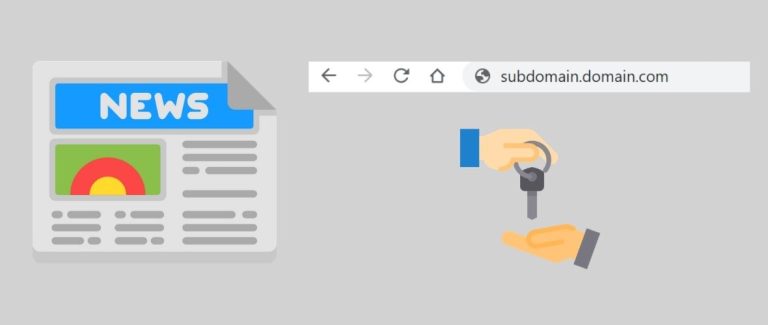If you have been paying attention to the SERP landscape during the last years, you may have observed that a number of successful domains were operating under a subdomain or subfolder of another brand.
This is true for a lot of industries but the one that has been impacted the most is the coupon industry. Here is a random query I ran, and out of the three first results, two actually belong to well-established news outlets.
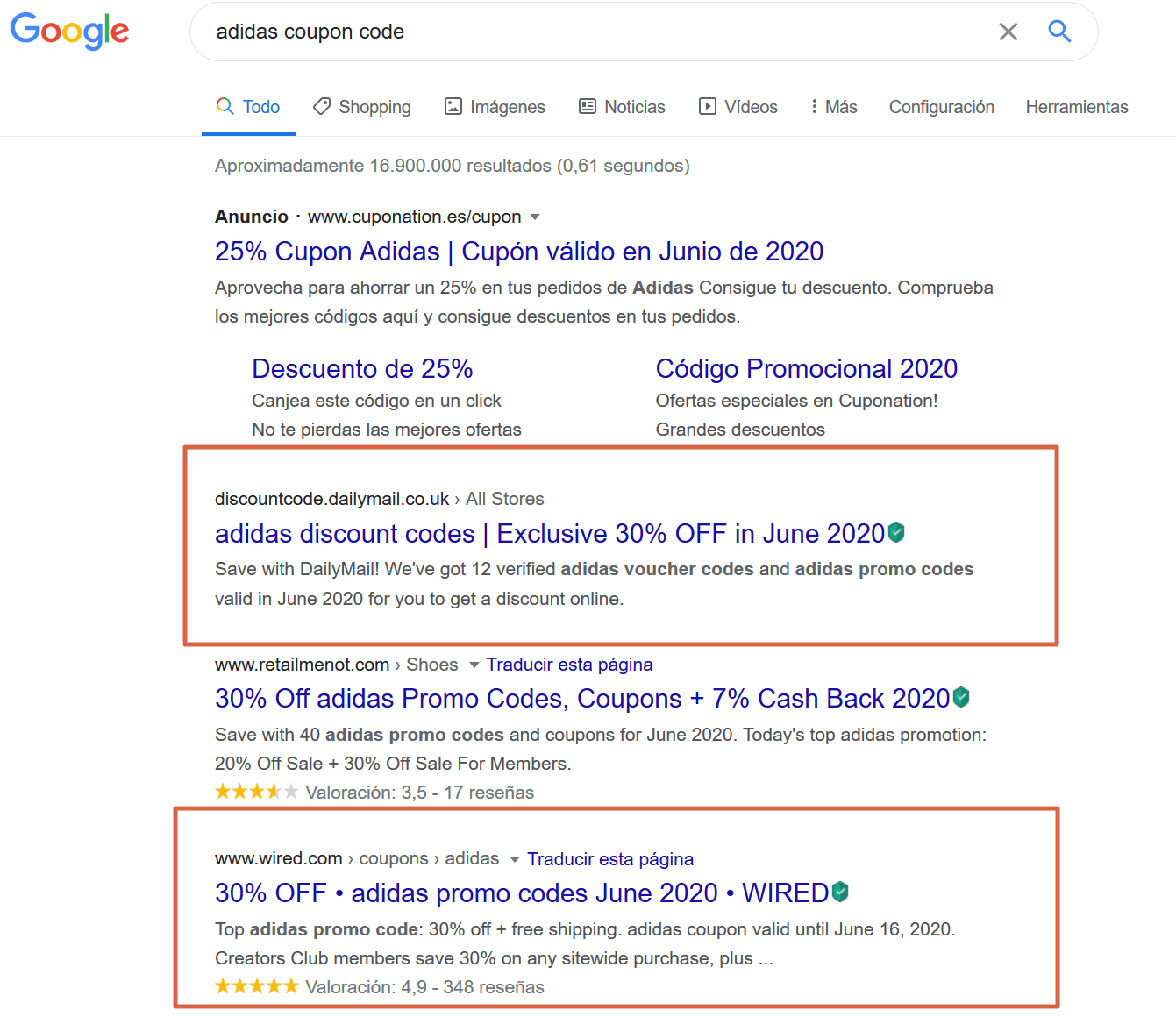
In this article, we are going to explain why we see such a situation in a lot of markets. You have exactly the same situation in France, Italy, Germany …
Newspapers in a digital-first world
Before tackling the main subject of this article, we must explain why we often see these subdomains or subfolders linked to newspapers and no other companies.
Some years ago, this industry was running on an advertising-only business model. With radio and TV, it was one of the most widespread ways of marketing a product or a brand. This is actually why we saw, in the early 2000s, the birth of free newspapers: the advertising money was enough to break-even: you didn’t have to charge for the content you were producing.
Today, the reality is very different: the market share of printed advertising has fallen dramatically. You can see the data for Spain below, extracted from an amazing presentation on SEO for newspapers (in Spanish) that you should definitely check out if you are interested in this matter and can speak the language.
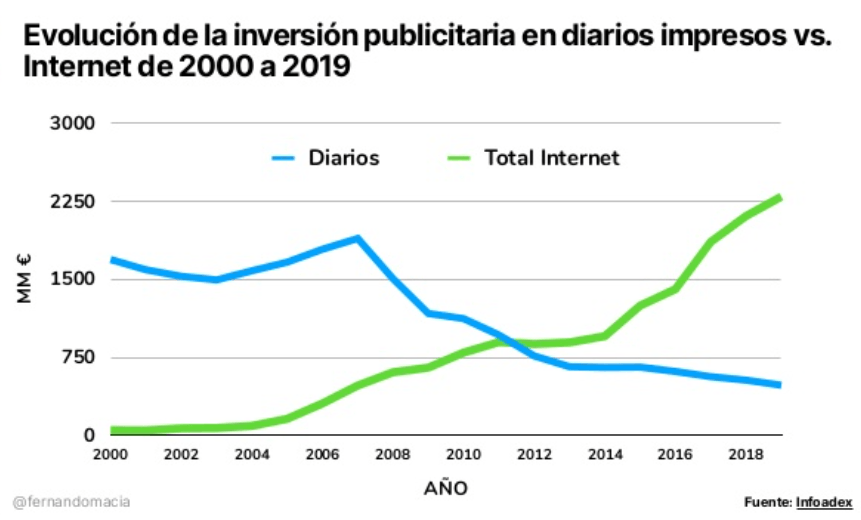
And let me highlight what you already know: the internet advertising budget is not allocated anymore to newspapers: the vast majority is used on Google, Facebook, and Amazon. They still get a piece of the cake, but a (way) smaller part.
At the same time, newspapers had to create and maintain a digital presence, which obviously increased their costs. The equation was not working anymore and they had to find alternative ways of earning money. The most famous one was the creation of subscription plans, where you would pay a monthly or annual fee to access exclusive content, which came with its own challenges:
- To compensate for the loss of advertising revenue, you need a lot of premium subscribers, an objective that a lot of newspapers fail to achieve. The only success story I can think of is the New York Times (see full story)
- A lot of internet users refuse to pay to consume content for two reasons: they don’t want to (they believe everything on the internet should be free) or because they sometimes don’t see the added value versus free content (which to be honest is sometimes true).
Once newspapers realized that they weren’t going to break-even with only a subscription-based business model, they started to look for alternative solutions. One of them was to leverage their popularity to offer a subdomain or subfolder leasing to a third-party.
You don’t know what the heck is a subdomain leasing? Don’t worry, let’s just go through that.
What is a subdomain leasing?
When you own a domain, you can create a huge number of subdomains easily. A subdomain leasing is simply when one of these subdomains is leased to a third-party and is ran independently.
Coupon sites are one example: a newspaper will create the subdomain and lease it to a company for a fee. In some cases, both parties are involved more in a partnership than a regular lease.
That is great, but what is even the point of paying for a subdomain if you can create your own domain? Let me explain why by showing an example in the Spanish market.
If you compare the visibility of two of the biggest names in this industry, you can see a normal trend for any given industry: you have fluctuations caused by changes applied to the project or external factors (a new competitor for instance), but nothing really surprising.
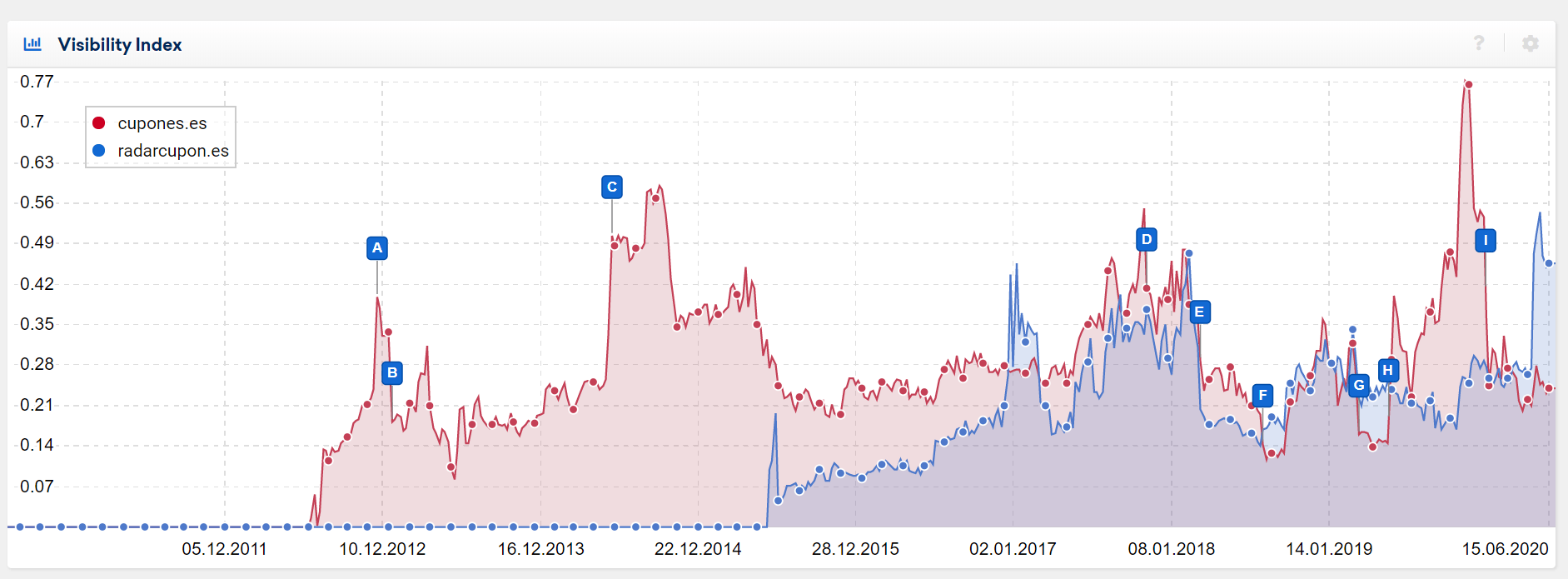
Now if I add two leased subdomains, you can clearly see that they achieved to keep up and then overcome these two websites in a matter of months when the industry is really competitive.
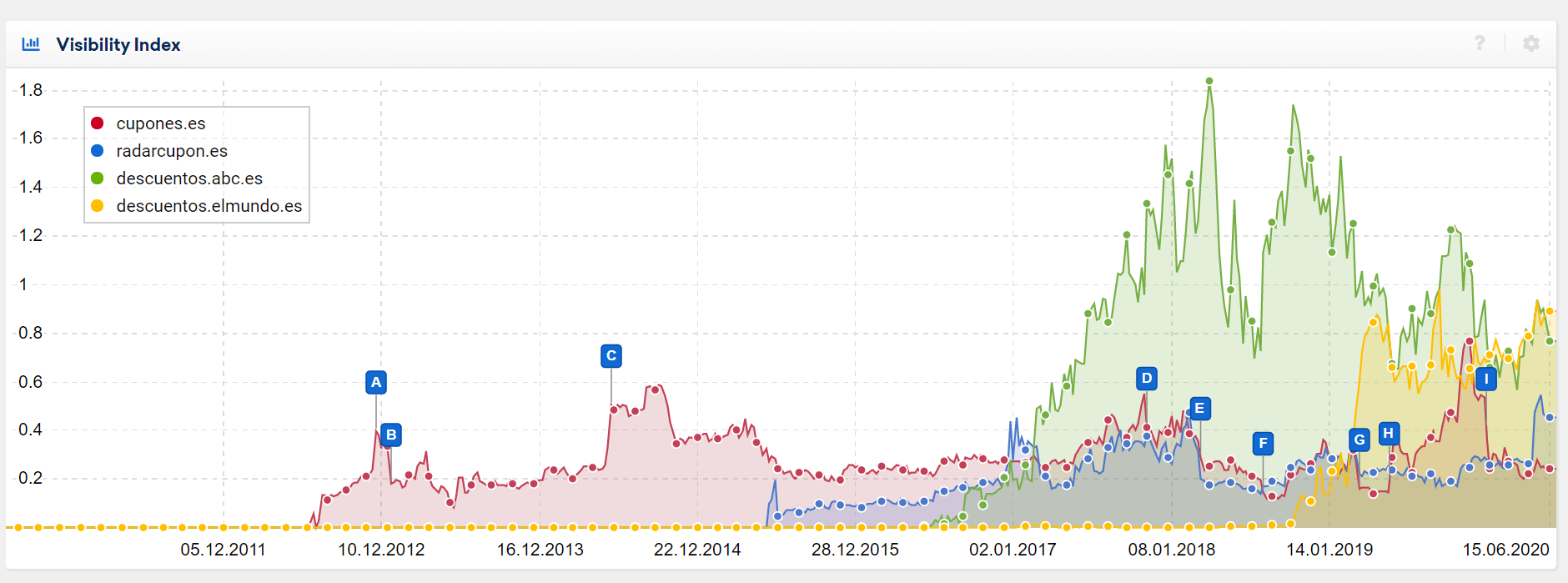
Let’s not explain just now how they can rank so fast, but you can understand why a company would be willing to pay just to use a subdomain of one of these newspapers.
What is a business model behind a cupon website?
If you are not familiar with this industry, let me take a moment to explain how these websites earn a living. At the end of the day, if newspapers are interested in running o leasing a cupon subdomain (or subfolder), it is because they can make money.
There are several ways of making money, but the most common is through affiliation. When you redeem a coupon code as a user, two options:
- A cookie is added to your navigator to identify the cupon website as the affiliate when you make a purchase
- You are redirected to the website where you want to purchase something and the coupon website is identified thanks to one URL parameters

In both cases, the coupon website will get a commission out of the purchase you will make. What is funny is that the commission can sometimes be earned even if the coupon doesn’t work. Which explains why so many coupons are expired or not valid.
Given the traffic you can achieve with these websites, it is very clear that you can make some real money in this industry 🙂

How do leased subdomains (or folders) rank so fast?
Back in 2018, Google warned that leased subdomains could get hammered. In reality, little happened because these subdomains are not worse than others. From a user perspective, they deliver the same thing: a coupon code. You can’t assimilate it to spamming, it is different.
So, how do these websites rank so fast? If we look at the number of links reported in Ahrefs for two major players in Spain, we actually see that cuponation.es has more and more domains.


Yes, but the trick is not to look at how many but from where and how. I will use descuentos.abc.es to explain it.
Like in a lot of countries, you have a lot of newspapers in Spain but they actually belong to a reduced number of media companies. If you want an example for the US, just look at this amazing article written in 2016.
So, the group behind ABC (Vocento) also owns several other brands, including one called La Voz Digital.

This website has a link in its footer, using the keyword “Descuentos”, linking to… descuentos.abc.es. Not very surprising, I know.

On the main ABC website, you also have a link in the main navigation using the keyword “Cupones descuento”. Again, to descuentos.abc.es.
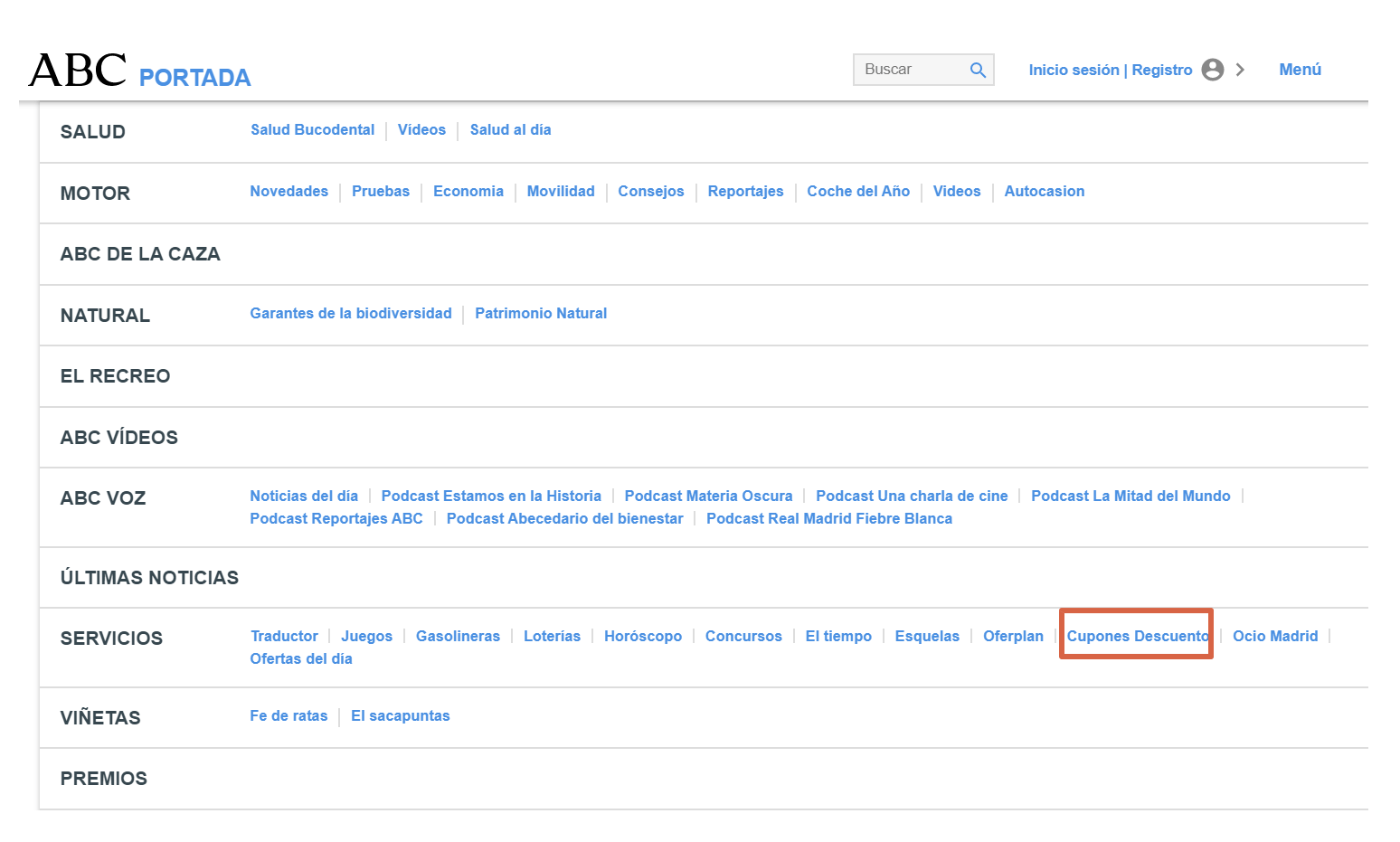
You got the point, don’t you? These websites are basically leveraging their network to rank new domains/subdomains fast. And of course, Google will rank faster a website receiving a decent number of links from these popular websites than a new brand. Links do matter and I explained it an older post.
For newspapers, being able to rank quickly a website on a new vertical is great and it is completely normal that they leverage their capacity to do so. I mean, you have countless of examples of other industries where the German domain would link to the Italian domain using the exact keyword in Italian for instance. It is exactly the same. So why would we blame newspapers for doing that?
It also solves a part of the problem we mentioned at the beginning of this article. They can launch new businesses and diversify their income stream. But let’s be honest: they still to launch a few to compensate the shrink of their physical advertising revenue. They also need to be careful: you can’t ruin your brand reputation by leasing your subdomain to a bad third-party. That’s exactly why they actually don’t launch a dozen of new verticals at once, that would be quite risky.
For competitors, it means that you need to provide something else than just the cupon to compete with these websites. As you can’t compete with Amazon if you offer exactly the same, you need to differentiate yourself and work hard on your branding. Something that achieved the brand Chollometro in Spain for instance: they don’t just offer coupon, they also provide huge bargains. And everything is validated by the community to ensure it is real !

Is it the only thing happening with their subdomains?
Obviously, no. In terms of SEO, the news industry is very different, because you basically do a lot of real-time SEO. The vast majority of your content will generate traffic for less than 72H. Yes, you can create hub pages on key topics (coronavirus, world cup, etc…), but this doesn’t account for the majority of their traffic.
Hence, the news industry started to acquire (I don’t think these cases are leased but I may be wrong) existing projects and include them as subdomains, to rank on evergreen keywords as well.
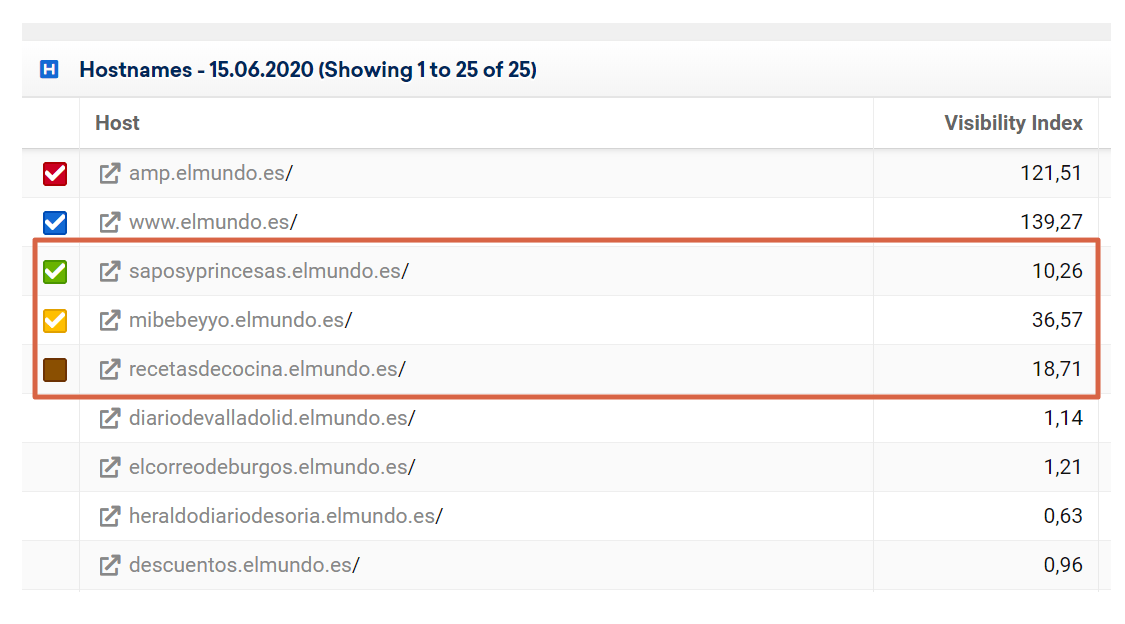
Why? You don’t have to create everything from scratch and you can’t ensure that a part of your traffic comes from keywords with more stable search volume over time. Again, the idea is to diversify their stream of income because the old paradigm is broken and cannot be applied to the digital world.

You can also create new business models around these subdomains. If you have a recipe section, you can create a partnership with an online supermarket to allow your users to order the ingredients from them for instance.
Conclusion
Subdomain leasing is here to stay, so we better get used to it. I don’t think it is a bad thing per se, because again these websites are fulfilling the search intent. They don’t rely only on the backlinks to rank, even if it helps a lot.
Is it unfair? Big brands are always advantaged: Amazon would rank easily on a new commercial term than any other retailer for instance, and I don’t think this situation is any different. If you have a different opinion, I would happy to discuss it with you in the comment section though 🙂
